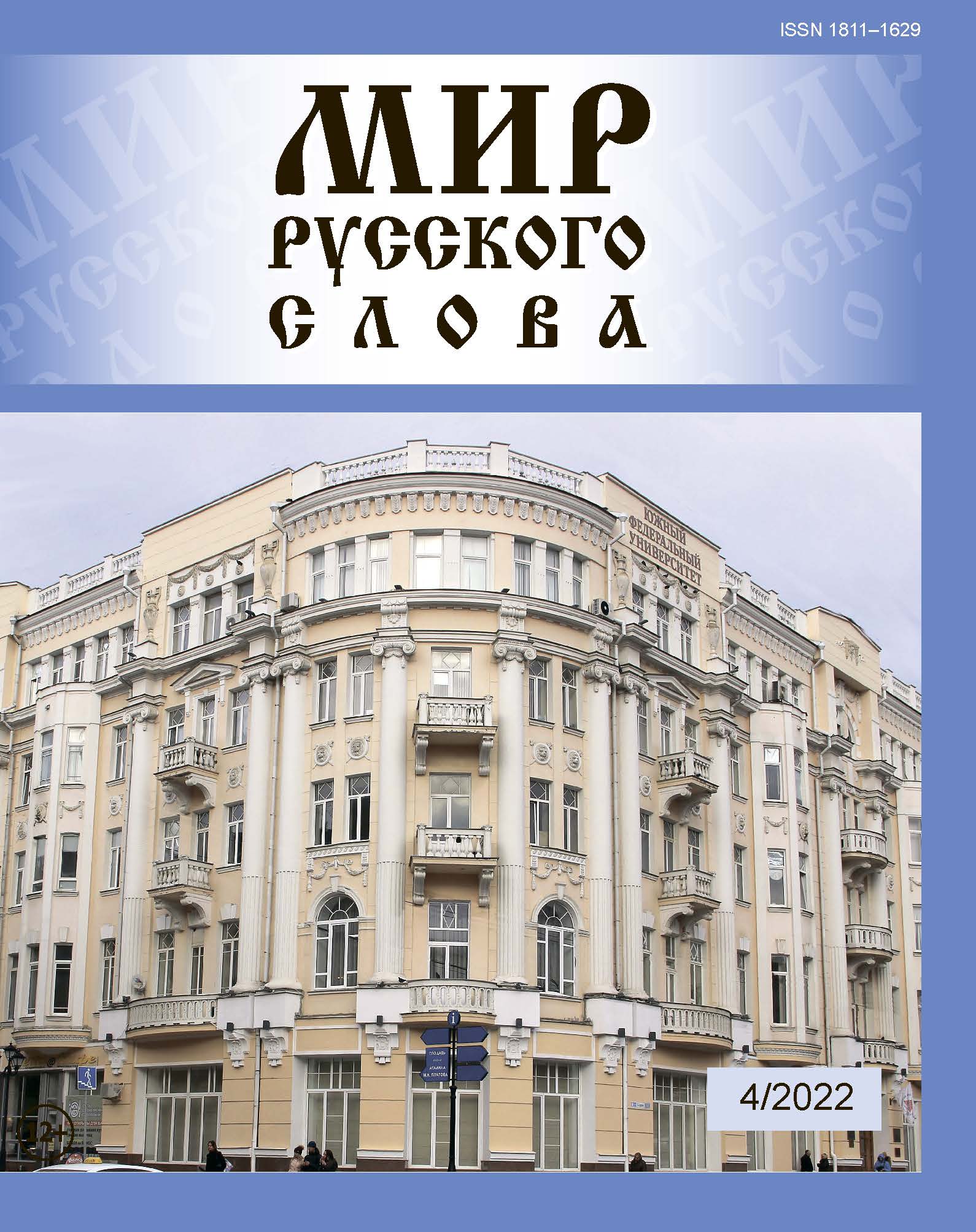О женщинах, нежности и нужности в паронимических формулах русской поэзии
DOI:
https://doi.org/10.24412/1811-1629-2022-4-61-70Аннотация
Статья посвящена паронимическим лексико-семантическим парадигмам и появляющимся в поэтических текстах устойчивым сочетаниям паронимов-аттрактантов,
которые можно назвать «формульными». Автор определяет паронимию как системное языковое явление сближения сходно звучащих, но различающихся по морфемному составу и семантике слов, которое становится возможным из-за выделения
в них квазиморфов, своего рода эвфонических этимонов. Рассматривая «формульные» корреляции лексем женщина, нежный/нежность, нужно и жизнь в 150 фрагментах поэтических текстов конца XVIII — начала XXI в., автор показывает возможности возникновения внутри парадигмы комбинаций, формирующих парасинтаксические предикативные единства, в которых аттрактанты образуют звуковые метонимии
и метафоры и расширяют свои исходные значения за счет транслируемых при аттракции дополнительных сем. Слова-аттрактанты при этом превращаются в компоненты сложносоставной номинации некого объекта или ситуации. Благодаря установлению даже при дистантном расположении аттрактантов логико-семантических
отношений предикации каждый из аттрактантов может быть как «определяемым»,
так и «определяющим», представляя собой пропозициональный компонент. Микропрозициям (Жизнь это женщина, Жизнь это нежность, Женщина это нежность, Жизни
и женщине нужна нежность и т. п.) соответствует макропропозиция, объединяющая все элементы парадигмы. Анализ, отраженный в статье, подтверждает предположение, что устойчивые паронимические корреляции объединяют не случайные слова, а своего рода мифологемы.
В данном случае как мифологемы рассматриваются слова-концепты женщина, жизнь и
нежность. Исследование выполнено на материале поэтического подкорпуса Национального корпуса русского языка методами корпусного, семантического, синтаксического,
текстового анализа.
Ключевые слова:
паронимическая аттракция, паронимические формульные сочетания, лексико-семантическая парадигма, фонический синтаксис, семантические преобразования, образ женщины, поэтический текст
Скачивания
Загрузки
Опубликован
Как цитировать
Выпуск
Раздел
Лицензия
Статьи журнала «Мир русского слова» находятся в открытом доступе и распространяются в соответствии с условиями Лицензионного Договора с Санкт-Петербургским государственным университетом, который бесплатно предоставляет авторам неограниченное распространение и самостоятельное архивирование.




